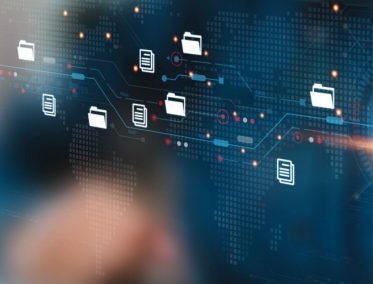Last week we held our second webinar in our series “The End of the Road for Your EBS: Why Act Now & Where to Start Your ERP Modernization”. You can check the recording of the webinar here.
Below you can find the questions that arose in the webinar and their answers.
Q: What happens if I haven’t converted all of my Discoverer reports to something else before the upgrade? Do they all just stop working?
A: This question gets asked a lot when we talk to customers about upgrades. Let me begin by saying that ITC recommends that you make every possible effort to get reports migrated off of Discoverer and on to some other platform as soon as possible (if you can’t migrate all reports at least migrate the critical reports). That comment being out of the way, here is our experience with customers in your situation. We have seen that most Discoverer reports actually survive the migration to R12.2 and work as before. The problems that can occur fall into a few categories.
First, if you run into a new bug, there is no way to get a patch for it – you’re stuck. Second, if you make any changes to existing Discoverer reports and something breaks, it is not guaranteed that Oracle or ITC can fix it – so it is safest to not make any changes to what is already working. Third, the farther away we progress past the end of support (which happened 3 years ago), there is an increasing likelihood that new desktop client updates (JRE, Windows, browsers) will have unpredictable effects on Discoverer. So, it’s a calculated risk – you can make an informed decision to take that risk based on your circumstances, but we encourage you to convert as soon as possible.
Q: When discussing Integrations, you mentioned “using Oracle Fusion Middleware or SOA to extend the functionality”. What do you mean by that?
A: First of all, The SOA suite is a component of “Oracle Fusion Middleware”, but it also includes many other components, including a J2EE development and runtime environment.
The idea is to build extensions as external composite applications that are modern, containerize key functions or processes such as processing invoices, purchase orders, etc.
Such extensions could survive and persist regarding your future Oracle ERP migration path be easily ported to the cloud and function with Oracle ERP cloud, or Oracle EBS in the cloud.
They offer Advanced UI, Ajax-style UI, Self-Service functionality, business users dashboards, etc.
Q: Are there tools to convert Oracle Forms to ADF?
A: No, not from Oracle. There may be some 3rd party tools that might assist. But because of the differences in technology, I can only visualize a complete rebuild.
Q: What release of R12.2.X do you guys recommend Upgrading to?
A: Short answer – whichever one your business needs dictate.
There are new capabilities built into each point release and you should review those and make a decision based more on the functionality as opposed to letting the technology play too much of a factor as it has in the past. This is a topic where the new 12.2 “continuous innovation” architecture really comes into play. In the past, when an upgrade project was contemplated, it was very much the accepted practice to upgrade to the most recent version of EBS. There were multiple reasons for this, not least of which was that the most recent version typically has the most recent functionality and the most recent bug fixes.
Customers who might have wanted to upgrade to a slightly older version of EBS – for whatever reason – often shied away from doing that because it meant that another upgrade project automatically appeared on the horizon – a project to upgrade to the latest revision at some point in the future. Since upgrade projects had a reputation for being difficult and expensive, customers had a strong incentive to avoid them. Today, things are different. With 12.2 being the final release of Oracle EBS, with there now being a much cleaner separation between the Applications and the underlying technology layers, and with 12.2 being on the continuous innovation model, it is now much easier for a customer to upgrade to an older point release and then do a relatively inexpensive, lower effort upgrade to a recent version without too much to be worried about.
A customer might want to upgrade to an older point release due to compatibility with a 3rd party add-on solution, or maybe just update to an older version because it had been out longer and was therefore considered more stable. Upgrading to an older release once you are on 12.2 isn’t a big problem anymore because a subsequent upgrade from the older release to the latest release is no longer as difficult or expensive. Upgrades going forward will be more “Cloud-like”, with implementation timelines measured in weeks instead of months, and price tags measured in 10’s of thousands of dollars rather than 100’s of thousands (or even millions of) dollars. So, if you want to upgrade to 12.2.9 because it’s been out for a year and is stable – go ahead. The upgrade to 12.2.10 or 12.2.11 in the future won’t cost you a fortune and it will be easier to execute than what you’ve dealt with in the past.
ITC has no strong opinion as to the version (from a technology or effort standpoint). Choose whichever version meets your business needs and then plan your roadmap with that version as your starting point. As a final interesting note – you could potentially even perform the upgrade “live”, while users are still in the system.
Q: What is a “Smart Integration”?
A: It is how I refer to integrations that do more than push data or a message from 1 point to another. It’s more tightly integrated with its endpoints and people involved with the business process. It weaves together functions of different applications, it orchestrates a business process, enforces business rules, evaluates the data, enriches or transforms data, it has complex error handling, abilities to self-remediate issues and errors, or at least engages a person to assist in resolving issues.
Q: Do you guys recommend a particular BI tool to work with R12.2?
A: ITC wouldn’t recommend any of the ones mentioned in this webinar over any other one without knowing more about your business requirements. They are all solid tools and they all integrate with EBS without an excessive amount of effort. What you should concentrate on is the business requirement you are trying to meet.
For example, in some companies, the biggest consumers of BI data are in Finance. Finance users want to connect – for the most part – to the Finance modules and they overwhelmingly want to be able to download data to every accountant’s favorite tool – MS Excel – so that they can slice and dice it the way they want and (potentially) to upload results back into EBS. In other companies, the biggest consumers are in Sales and Marketing. They might not want to do as many downloads to spreadsheets as their friends in Finance. It could well be more important for them to be able to access predefined KPI reports on a mobile device from wherever they happen to be and then to drill down to details – all done remotely. Different BI tools are better suited to different needs. They have different price points and different capabilities. I would say to look at your requirements first, then look back at the tools. All of the tools are good, as long as they are targeted at the right requirements.



